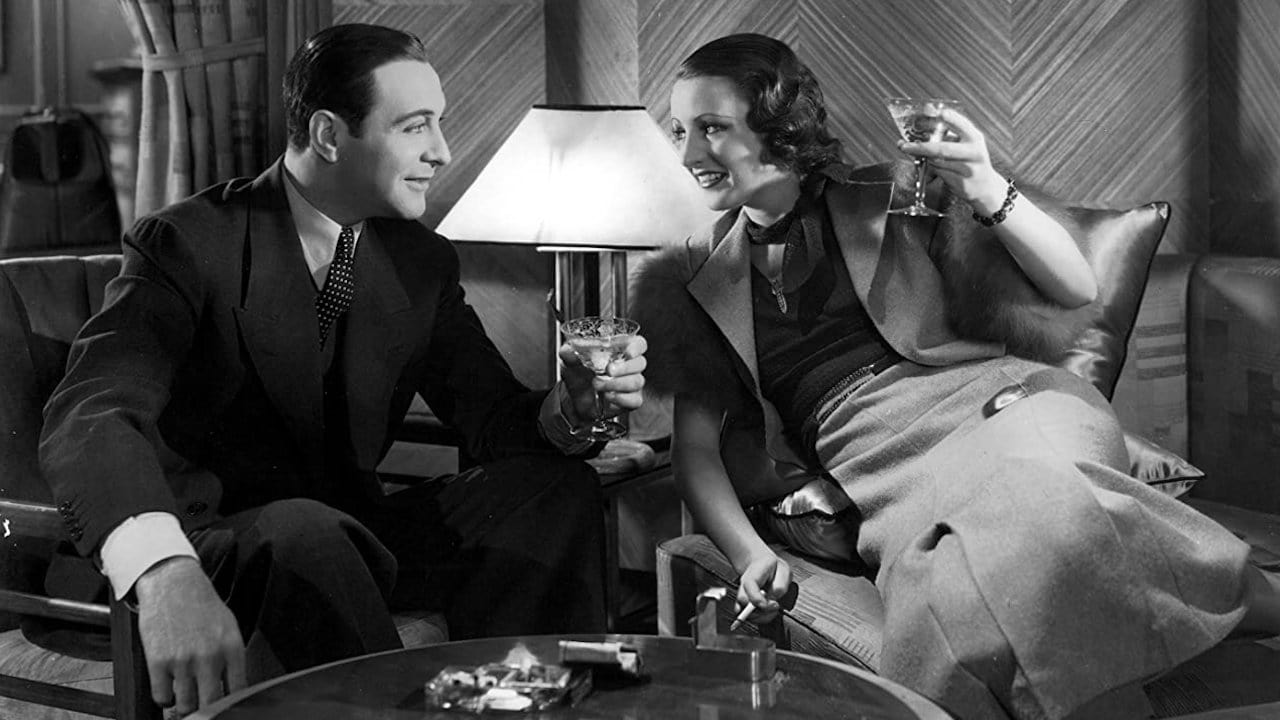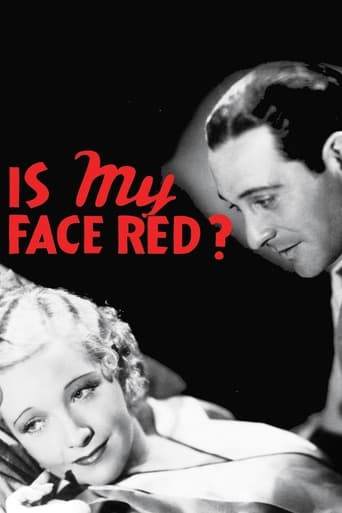



Strong and Moving!
Charming and brutal
Better Late Then Never
Good films always raise compelling questions, whether the format is fiction or documentary fact.
View MoreWilliam Poster (Ricardo Cortez) is a tabloid news reporter. He's willing to go to practically any length to dig up the dirt on people and that would include dressing up in costumes or using his girlfriend, Peggy (Helen Twelvetrees). She's a chorus dancer and hears a lot of gossip on her job...and he uses this to help make a name for himself. While he's a real egotistical cad, just how much of one is evident when he meets a rich heiress, Mildred (Jill Esmond). He impulsively gives her the ring he intended to give Peggy and when both find out about this, he's sure in trouble with them. And what about the ring...was he seriously thinking of marrying Mildred or was this just a ruse in order to get her to open up and talk about her society friends...something Poster takes full advantage when he hears about them. While treating these two women like dirt is reprehensible, Poster also is an idiot. When he witnesses the evil bootlegger, Tony (Sidney Toler), murder someone he decides to publish this story AND take no apparent precautions to protect himself. So, by the end of the film, practically EVERYONE wants to see the guy dead!!The main problem with this film is that they took the unlikability of the main character too far. He's such an egotistical jerk that you want him to get killed...and that greatly harms the picture. Watchable but not much more.
View MoreIn addition to HUGE stars Helen Twelvetrees and Ricardo Cortez, this one also has Sidney Toler (Mugatti) and Zasu Pitts! In this one, Twelvetrees is Peggy, the showgirl. Cortez is Poster, the gossip-column writer who keeps getting his paper in trouble by finding and exposing things that might be better left unsaid. He meets up with rich socialite Mildred Huntington, gets engaged, and things start getting spicy. Z. Pitts is the Gazette operator with some funny lines. When Poster witnesses a moidah, things go off the rails. Mobsters don't appreciate when Poster starts talking about them. Another fun character is Poster's secretary "Bee"... played by Arline Judge. Judge's personal life story is just as interesting as her character.. married eight times! and the first one was to her mentor and director Wesley Ruggles. The story takes a turn when the OTHER paper in town gets the scoop on Poster for once. It's pretty good. An early talkie. Moves right along. Early roles for Twelvetrees, Toler, Judge. Directed by William Seiter, the master.
View MoreWith a title like Is My Face Red? I was expecting a comedy – a romantic comedy – but this is actually a newspaper yarn and the emphasis is on crime rather than comedy, thrills rather than romance. This is not to say that the feminine side of the equation is inadequately represented in Red. In fact, there are no less than three young women tied up with the movie's central character, William Poster (played by Ricardo Cortez), including the lovely Jill Esmond and Arline Judge as well as Helen Twelvetrees. (I always though "Twelvetrees" was a weird name to choose for a screen career, but it was in fact her real, married name). Ricardo Cortez is perfect as the stop-at-nothing newspaper columnist, although it's Sidney Toler whom most viewers will focus upon simply because both scriptwriters Casey Robinson and Ben Markson and most especially director William A. Seiter go out of their way to draw him to our attention. He even merits a very extended (and very effective) close-up – rare for an actor who doesn't even figure in the main credit titles. Incidentally, I always thought Seiter was a journeyman director at best, but in point of fact he seems to have gone out of his way to direct at least one really outstanding movie a year. Like John Ford, Seiter is one of the very few really top-of- the class silent movie directors who not only successfully made the transition to sound, but actually did better! Is My Face Red? with its actionful long take in Poster's office and a startlingly effective if brief use of a first-person camera on the steamer is obviously his 1932 choice. Available on an excellent Warner Archive DVD.
View MoreEven though he had only made his radio debut 2 years before, in 1932 Walter Winchell was one of the most powerful newspaper and radio gossip columnists in America. He had already been caricatured by Lee Tracy in "Blessed Event", mentioned in a popular song "Shuffle Off to Buffalo" - "it's a cinch Winch'll know"!! Now it was time for a nitty gritty portrayal of a lovable heel as only Ricardo Cortez could do. He had been bought to Hollywood in the 1920s to bring Rudolph Valentino into line - Paramount thought Cortez may have had some of the Valentino magic. No one did but Cortez proved he was a capable leading man. In talkies he went from strength to strength and while his villains are indelibly etched in memory (who could forget his psychotic mobster in "Bad Company") it is nice that he could "lighten up" as well.Sprinkled with some terrific supporting players - Robert Armstrong as Poster's rival columnist who finally scoops him and perky Arline Judge as Poster's world weary secretary ("Remind me to give you a break baby", "I've had a break, big boy"), Cortez plays William Poster who invites the public to look through his "Keyhole" column in the Morning Gazette and uses and abuses friends in his eagerness to spill the dirt on high society.His girl, Peggy (beautiful Helen Twelvetrees), a showgirl, also helps him out with hot tips and overheard bits of gossip but she is soon forgotten as Will gets on the track of a genuine British Blue Blood, Mildred Huntington (unattractive Jill Esmond - why she was always cast as the sultry upper crust other woman, I'll never know - maybe because she talked posh!!)When Will accidentally witnesses a murder in a bar he feels no fear in telephoning the story to his paper - even though the killer (Sidney Toler) is crazy and desperate and even though Helen has her best piece of emoting in the movie as she desperately pleads with the unbending Will in the phone booth to think of his safety!! Things start unravelling for Will (they always do!). Peggy dumps him after seeing his ring on Mildred's finger (can't Helen remember how he was in "Bad Company" - it was only the year before!!) Then Mildred gives him the air claiming she has just been using him as her "rough diamond" and seeing what it was like to walk on the wild side. Crazed killer finally confronts him in his office but fortunately Peggy is waiting in the wings to see he gets to the hospital on time - what a girl!!Gorgeous Helen Twelvetrees was one of Radio's first discoveries and in "Millie" all stops were pulled out to make her "Sin Pictures No. 1 Star". But by the next year Radio and Pathe merged, Katharine Hepburn became the studio's big hope and established stars such as Irene Dunne, Ginger Rogers and Constance Bennett were far out distancing Helen in public popularity. Unfortunately after "Is My Face Red?" Helen's contract was terminated but seeing her luminosity in this movie, I think RKO were crazy!!!Spot Rochelle Hudson as a surprised young bride through a porthole!!
View More